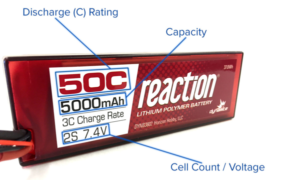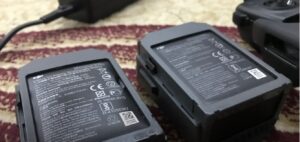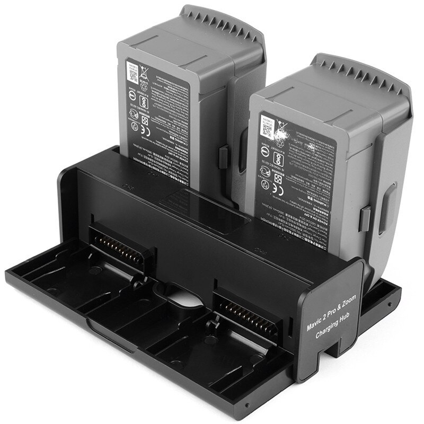The battery is one of the most important parts of our Drone’s energy storage and potentially the number one cause of a crash.
A LiPo battery is made up of individual cells, where each cell is made up of some metals and chemically packaged together to generate an electric charge. By connecting these cells together in different ways, we are able to produce different LiPo batteries with different voltages and capacities.
The main characteristics of a LiPo battery, in addition to their dimensions and weight, are their voltage, which is measured in Volts, their capacity, which we measure in mAh, and the maximum safe discharge rate, which is the number next to the letter C, which is written on the housing

The drones use Lithium Polymer (LiPo) batteries.
Low temperatures can cause your batteries to be out of order due to reduced chemical activity of the batteries.
Follow these tips to ensure a safe flight:
Use only fully charged batteries.
– Preheat your battery to 20 ° C or higher.
– You can control the battery temperature through the Drone application.
– Use a battery heater if available.
– Batteries run out faster in cold temperatures.
– Always check the condition of your drone battery during the flight.
LiPo Batteries:
Advantages
– Much lighter weight and can be made in almost any size or shape.
– Much higher capabilities, allowing them to retain much more power.
– Much higher discharge rates, which means they have a higher perforation
Disadvantages
– Much shorter lifespan, averaging only 150-250 cycles.
– The sensitive chemical while it can lead to fire if the battery is punctured.
– Need special care for charging, unloading and storage.

Battery charging
When they leave their factory, Li-Pos have about 50% of their cargo.
Li-Po components require special charging parameters, which ONLY chargers made for Lipo can be used.
The maximum charging voltage per element (in series) is 4.235V. In practice the charging voltage is set at 4.2V or 4.15V for more safety.
Charging with more current than allowed will not save you enough time to compensate for the expected reduction in battery life and capacity, or the risk of ignition.
Charging can be done with the elements in series or in parallel, or in combination of both. In any case the data must be exactly the same.
When a Li-Po battery has reached the end of its life, its temperature has risen excessively after the flight.

